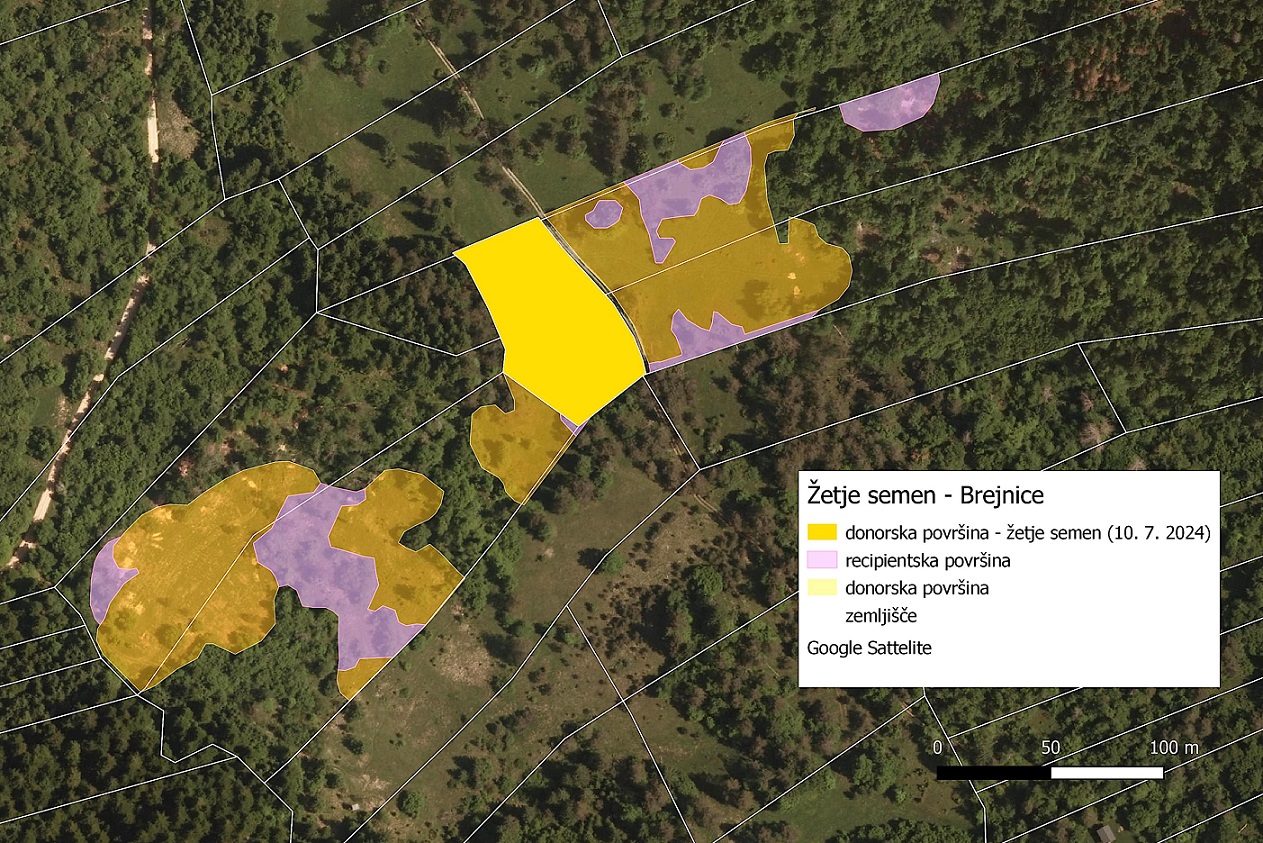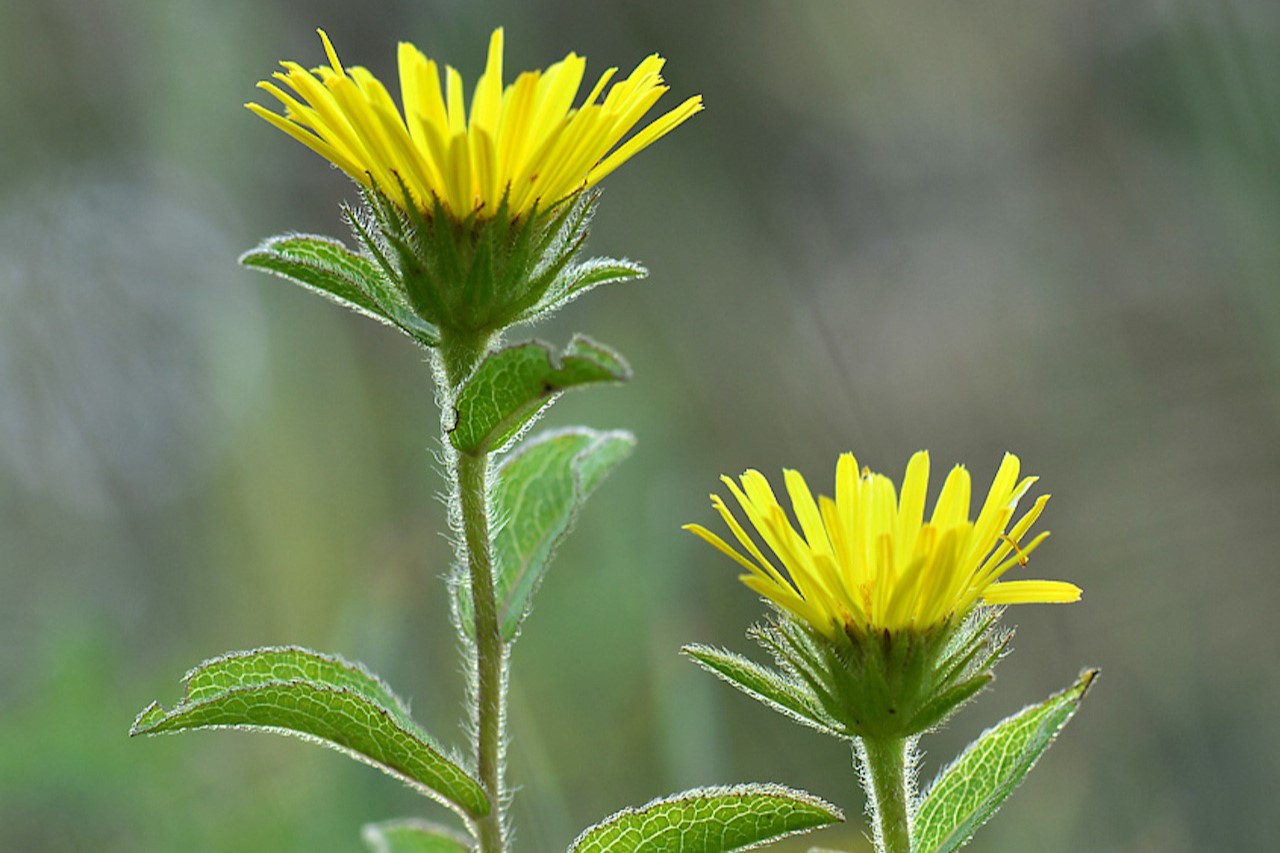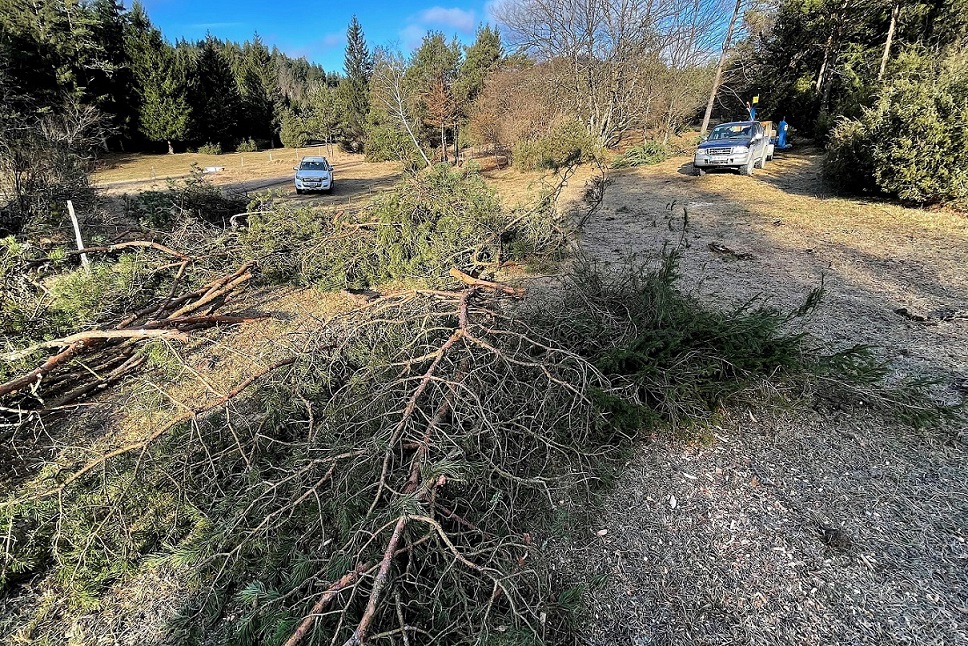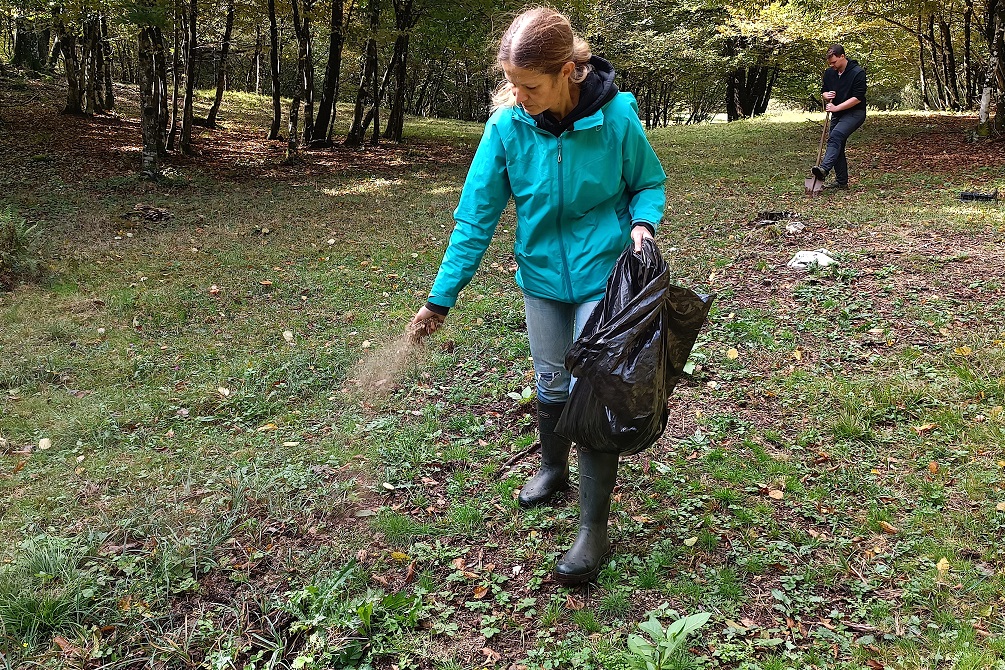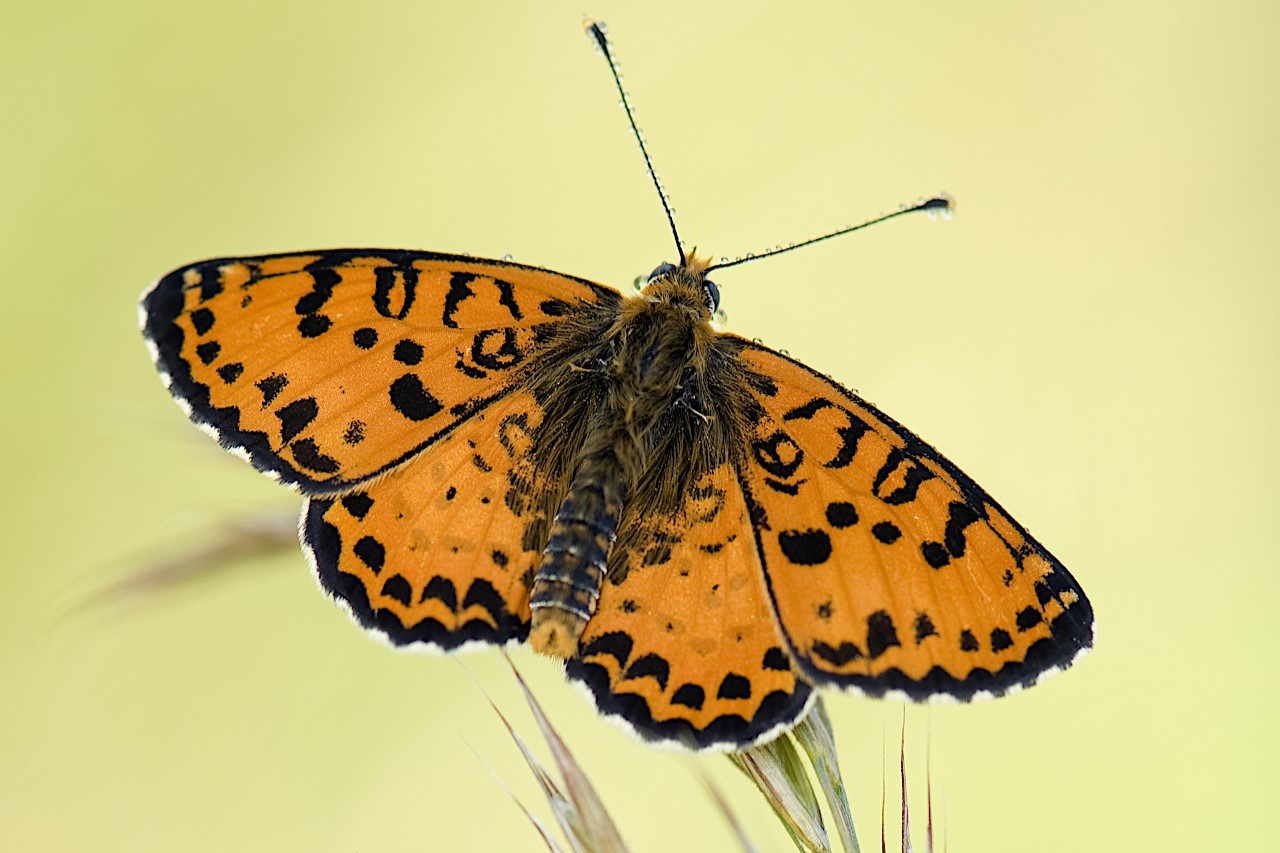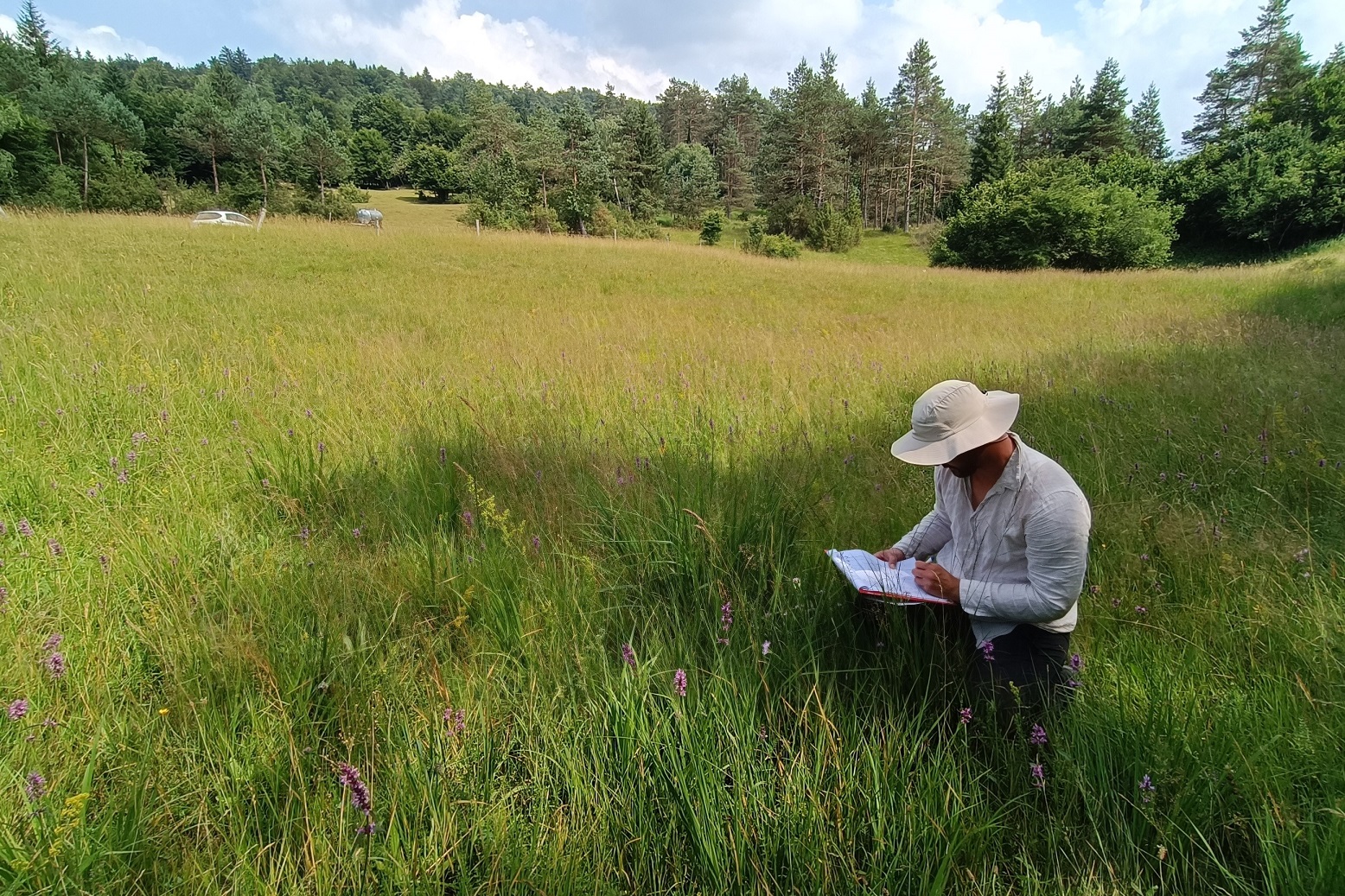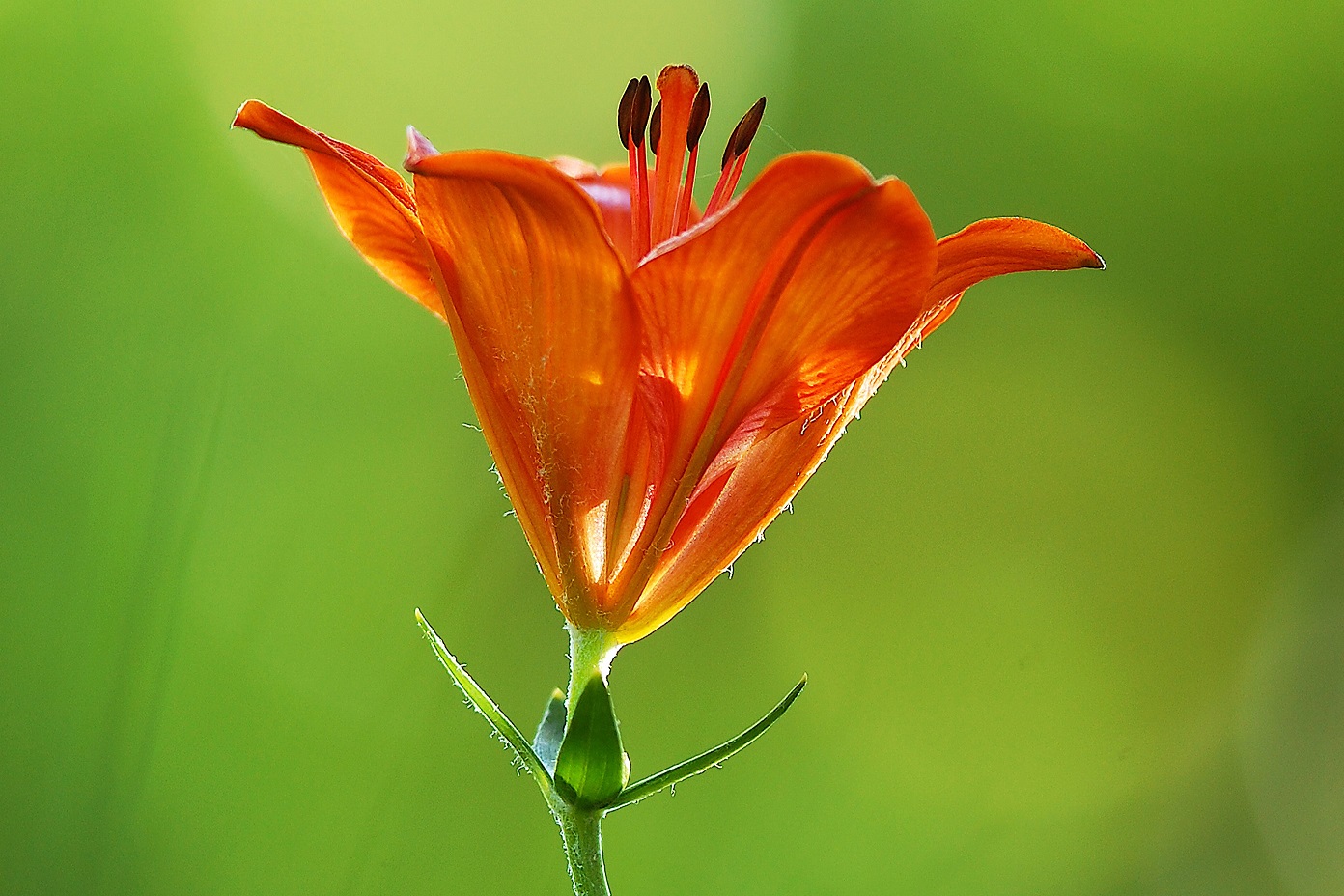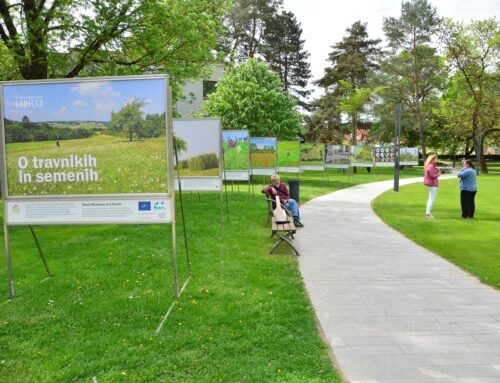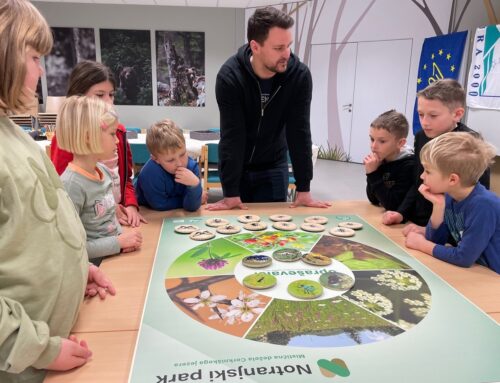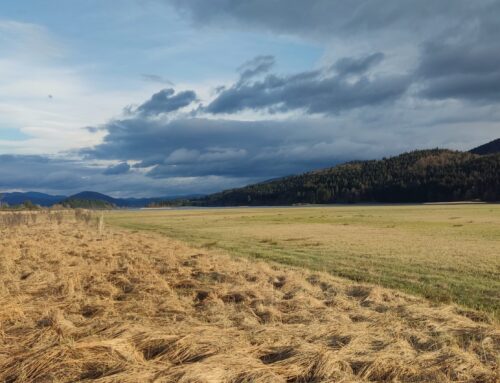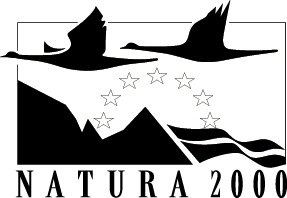In the Notranjska Regional Park area we focus on restoration of grasslands and fen habitats on moist to wet soils of intermittent Lake Cerknica as part of the LIFE FOR SEEDS project. However, part of the habitat restoration activities is also carried out in the Brejnice area on the Menišija plateau, where well-preserved, species-rich meadows and pastures on relatively dry soils intertwine with forests and grasslands, where management was abandoned some time ago and are nowadays in various stages of succession – overgrowing with woody plants.
At the beginning of the project, we had selected areas of well-preserved semi-dry grasslands (donor areas), where we intend to harvest seed mixtures to use in grassland restoration during the project. Before sowing the seed mixtures at the recipient plots the woody plants are removed. During the project, we will also plant seedlings of community-forming and characteristic species in the recipient areas. The seedlings were grown by the project partners from the seeds collected on the donor plots.
In the first step we removed the woody plants from the recipient areas. Since the cut bushes produce young shoots for several years, we will continue with the removal of these species from the recipient plots for the duration of the project or until the herbaceous plants become dominant. In the future grasslands will be maintained by mowing or cattle grazing with low load and no additional feeding.
In the second step, we aim to accelerate the colonization of newly available area (parts of land where woody species were removed from) by species typical of semi-dry grasslands through sowing seed mixtures and planting community-forming and other species typical of the habitat in restoration. We selected 1.9 ha of donor areas for harvesting seed mixtures and collecting seeds of individual species, and 0.5 ha were selected for habitat restoration.
Seedlings have been and will be planted on small parts of recipient areas, especially on patches of bare soil that were created after removal of trees and shrubs.
In April we planted the first 495 seedlings of two grass species typical of semi-dry grasslands – Upright Brome (Bromopsis erecta) and the Fescue (Festuca rupicola). We planted the seedlings on four patches of mostly bare soil, from which we had manually removed woody plants as part of the project already.
For the second time in 2024, we planted seedlings at the beginning of October. This time 315 seedlings of thirteen different meadow species typical of target grasslands were planted in the area where grass seedlings were planted beforehand. To increase the chance of seedlings taking root, we planted them after the rain, when the soil was well soaked.
List of all species whose seedlings were planted in Brejnice in 2024.
- Thistle (Cirsium pannonicum)
- Dropwort (Filipendula vulgaris)
- Greater Knapweed (Scabiosa centaurea )
- Spotted Cat’s-ear (Hypochoeris maculata)
- Yellowhead (Inula hirta)
- Common Rock-rose (Helianthemum nummularium)
- Common globe flower (Globularia puncatata)
- Fescue (Festuca rupicola)
- Nottingham catchfly (Silene nutans)
- Tor-grass (Brachypodium rupestre)
- Clustered Bellflower (Campanula glomerata)
- Common Hedgenettle (Betonica officinalis)
- Speedwell (Veronica barrelieri)
- White Cinquefoil (Potentilla alba)
- Upright Brome (Bromopsis erecta)
Unlike seedlings, the seed mixtures were sown over the entire surface of the recipient areas with the aim of increasing species diversity and the number of individuals on the meadows under restoration. Before harvesting the seed mixture, we conducted vegetation surveys of the donor plot according to the standard Central European method using the Braun-Blanquet scale.
Vegetation surveys provide data on the plant species’ composition and their coverage of the census plot i.e., the presence of species and the percentage of the census plot area covered by each species. The same surveys are also conducted at the recipient areas so we can monitor changes in vegetation over time, which allows us to assess the success and suitability of the restoration method.
As part of these inventories, we found 91 flowering plant taxa on the census plot, 84 of which were meadow species. 13 of the census species were clearly more abundant – each of them covered 5 to 25 % of the census plot. These are the dominant species that form the basis of plant community, while other species join them. Together they form a species-rich semi-dry grassland. In Slovenia four of the listed meadow species are protected and/or in danger of extinction according to the red list of endangered plants.
Following list summarizes the dominant and protected and/or threatened species found in the donor area during the vegetation survey.
- Common Bent (Agrostis tenuis)
- Common Hedgenettle (Betonica officinalis)
- Brome (Bromopsis transsilvanica)
- Mountain Sedge (Carex montana)
- Thistle (Cirsium pannonicum)
- Heath-grass (Danthonia alpina)
- Fescue (Festuca rubra)
- Dropwort (Filipendula vulgaris)
- Lady’s Bedstraw (Galium verum)
- Yorkshire-fog (Holcus lanatus)
- Moor-grass (Molinia arundinacea)
- White Cinquefoil (Potentilla alba)
- Yellow Rattle (Rhinanthus minor)
- Pyramidal Orchid (Anacamptis pyramidalis)
- Fringed Pink (Dianthus hyssopifolius)
- Common Fragrant-orchid (Gymnadenia conopsea)
- Fire Lily (Lilium bulbiferum)


